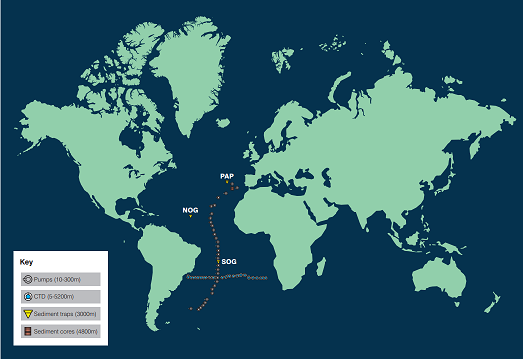Microplastics
An analysis, by NOC’s scientists, of our unique microplastic sample set will provide the first information on the wide-scale distribution and temporal variability of microplastics in the ocean, and their sedimentation.
Microplastics are the most dominant particulate contaminant identified in the global ocean. Emerging evidence for harm to biota, ecosystems, and potentially to human health, currently makes microplastics pollution an issue of enormous concern for society. Moreover, interaction of microplastics with marine particulate organic matter can potentially alter carbon transport to the deep ocean, which has implications for global climate.
Microplastics research at the NOC has developed very rapidly over the past three years with initial support from the EU programme AtlantOS and from the Natural Environment Research Council (NERC). An extremely advanced FTIR scientific instrument has recently been purchased specifically to characterise a variety of microplastics sample types in a high-quality, rapid and automated manner, down to three micron in size.
The NOC sample set comprises of sediment cores from the abyssal Atlantic (4000-5000 metre water depth) collected since 1985, suspended particles collected recently at a number of stations on a transect from the UK to the Falkland Islands down to 300 metre depth, and time-series sediment trap material collected at 3000 metres in the northeast (since 1989) and subtropical (since 2007) Atlantic.
In addition, the infrastructure of the LOCATE programme is now being used to collect particulate material in rivers and estuaries to quantify and characterise the source term of microplastics and how they are transported to the seas and oceans.
